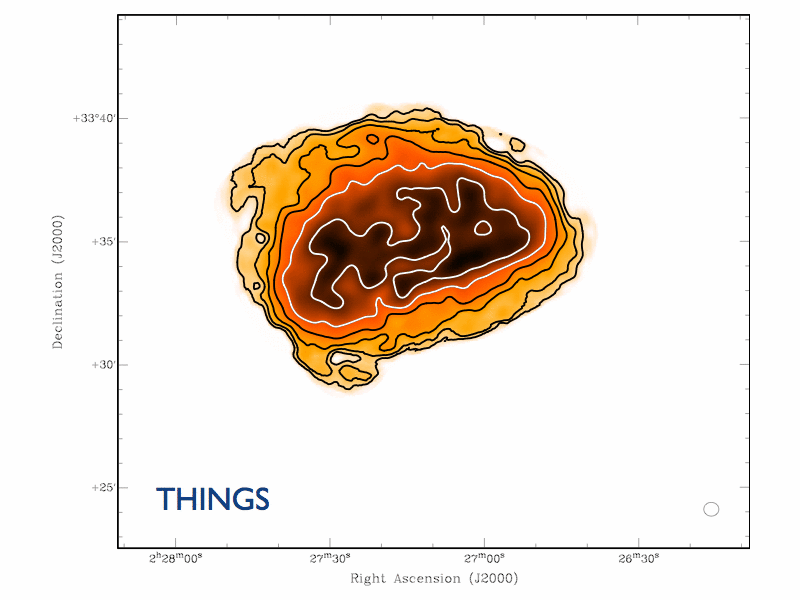Daily Image
06-04-2009Introducing the WSRT HALOGAS Survey
| Submitter: | George Heald |
| Description: | One of the "niche" applications of the WSRT in recent times has been extremely deep observations of nearby galaxies in the neutral hydrogen (HI) emission line at 1.4 GHz. Such observations have previously been performed on a handful of carefully selected galaxies, including the two most famous ones here in Dwingeloo: NGC 891 and NGC 6946. Because of the exceptional data quality, images of these galaxies seem to adorn every wall! Not only are the images produced by the WSRT beautiful, but more importantly they have taught us a great deal about the interface between galaxies and the intergalactic medium. Observing the "gaseous halos" of galaxies such as NGC 891 requires a large investment in observing time, but provides a glimpse into a crucially important chapter in the story of galactic evolution. Despite their importance, we only have such deep HI observations for a very limited number of galaxies, and are therefore unsure whether NGC 891, with its massive gaseous halo, is a typical or unusual galaxy. To answer this question, we (Heald, Jozsa, Serra, Juette & Oosterloo) have teamed up with astronomers from Italy and the US to do a large WSRT survey called HALOGAS (Hydrogen Accretion in LOcal GAlaxieS). One of the sample galaxies, NGC 925, is shown above. The new WSRT observations are compared to existing VLA observations of this galaxy, obtained during the THINGS survey. The THINGS map was produced at the same angular resolution as the HALOGAS map. It is clear that the WSRT is quite competitive with the VLA: the WSRT observations (which have far more sensitivity on the short baselines) reveal a vast, extended network of HI filaments in the outer regions of this galaxy. Observations like this will help us to characterise faint gas in the outskirts of the general spiral galaxy population, and to gain a far better understanding of the importance and properties of gas accretion. |
| Copyright: | ASTRON |
| Tweet |  |
